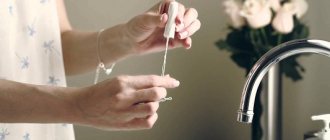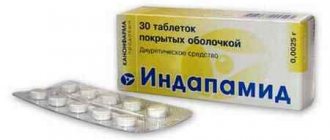Physiology of the female body
Every 9th grade student who has heard the teacher with at least one ear and leafed through a textbook is familiar with human anatomy. Although the organs of the genitourinary system are located close to each other, they do not have joint functions. The vagina is a sexual organ that precedes the cervix. The main function is to create microflora resistant to unfavorable microorganisms, remove secretions, including during menstruation, and provide pleasure during sexual intercourse.
The urinary channel is in close proximity to the vagina. But urine doesn't get into it. The channel removes accumulated fluid in the bladder several times a day. At the same time, it functions autonomously from the genitals.
https://youtu.be/OaCc3pUWOQ0
Which tampons are better
On the days when a woman menstruates, she is forced to significantly reduce her social activity, and even abandon some activities and processes altogether. But this statement is only partially true and applies only to those ladies who use sanitary pads.
From a health point of view, they are good in that all the fluid is removed from the vagina to the outside, but they are not as comfortable and convenient as tampons, with them you can hardly afford to wear white and tight clothes, but about swimming in a river, pool or sea, you can’t forget.
But tampons, on the contrary, allow a woman, even during her period, not to give up her habits and lead an active lifestyle.
These hygiene products are absolutely invisible to the prying eye, they are comfortable, do not irritate the skin, and reliably protect against leakage, but this is only if the tampons are correctly selected, both in relation to the individual characteristics of the body and in relation to the quality of the material from which they are made.
The main “FOR” in favor of tampons
Although the history of the appearance of the first hygiene products in the form of tampons goes back to the distant past, they appeared on the market in wide access relatively recently, only in the first half of the 20th century in America. And today they have gained enormous popularity among the fairer sex all over the world, since they have made the life of girls during menstrual bleeding much more comfortable.
A tampon is a hygienic product made of absorbent materials, which is inserted into the vaginal cavity and held there by its muscles, but at the same time does not hinder movement at all, protects against leakage and eliminates the sensation of leaking fluid. Agree, this is a huge plus, which cannot be said about gaskets.
Manufacturers of tampons pay special attention to the materials that are used, the absorption capacity of the product, its coating, size, and, of course, the design solution.
Thanks to this approach, the result is a hygiene product that allows women not to limit themselves during menstruation, but to continue to play sports, dance, swim and other active activities, of course, provided they feel well. As you can see, even the best pad is inferior to a tampon.
This product is available to a wide segment of the population, since it is sold in any pharmacies and stores, and is also represented by a large number of manufacturers, and accordingly they have different price positions.
Hygienic tampons are made by pressing from cotton wool, its blends and other high-quality materials. Their first and main difference is the degree of absorption and absorption of liquid. This indicator must be indicated on the product packaging. There are the following markings: mini, normal, super and super plus.
Mini tampons are intended for very young girls who have minimal discharge and no experience of sexual intercourse, that is, the hymen is preserved. Although they can also be used by women who have given birth and whose bleeding is scanty.
The remaining three types are designed for different days of menstruation and their intensity. Therefore, every woman can choose a hygiene product depending on her individual needs.
There are also tampons with and without applicators. Of course, with an applicator it is preferable from a hygiene point of view. After all, a hygiene product without it is inserted into the vagina with your fingers, and they must be perfectly clean; before inserting a tampon, your hands should be washed with soap, but in the modern world this is not always possible.
In addition, some manufacturers offer scented tampons to ladies. But such products must be treated with extreme caution, since allergic reactions may occur, especially in women who are prone to them.
Despite the convenience and comfort, the use of tampons should be limited in time. In no case should you use only them all days of your period. Since such an attitude towards oneself can lead to some complications that no advertisement will tell you about.
Let us devote a few lines to this important point. And so, discharge during menstruation is an ideal environment for the proliferation of pathogenic microbes and infections. Hence, if a tampon is in the vagina for more than four hours, it becomes a breeding ground for germs. The next point is the specific structure of the female genital organs.
The vagina is protected from the external environment by the labia minora. The cervix synthesizes a special secretion that removes blood and mucus after menstruation.
A tampon, on the contrary, is inserted in the opposite direction, therefore, such a violent action against nature can disrupt natural defense mechanisms or cause infection.
Therefore, it is important to choose and use this hygiene product correctly so that it becomes a source of comfort and not complications.
How to choose the right tampons
When choosing a hygiene product, it is necessary to take into account the age and intensity of discharge (they vary both on different days of menstruation and have individual characteristics of the body).
It is important that it is not recommended to use tampons that are too large, they will dry out the vagina and can harm the body, and too small ones are also not recommended, they will not provide the expected protection and will leak.
Therefore, as indicated above, young girls need to choose mini tampons. In women during menopause, the discharge is also not very intense, so the best option would be tampons marked “Normal”.
For women of childbearing age, tampons with different absorption rates are suitable; they should be selected depending on the days of menstruation and the amount of discharge.
But it’s best to start your acquaintance with this hygiene product with normal tampons. And then if it turns out to be insufficiently effective, then turn to other types.
This can be determined simply; if the tampon has leaked in less than three hours, then you should choose a different type of tampon. In general, they need to be changed every four hours.
And at night, use special night pads for protection.
How to go to the toilet with a tampon
Therefore, there is nothing in common between the vagina and the urethra. These are completely different structural organs. There is no need to remove the tampon every time you go to the toilet. No urine gets on it under any circumstances. The unprotected thread is the one that remains outside. It is recommended to move it to the side so as not to wet it with urine. All other issues regarding the use of a tampon have been covered by the manufacturers. If urine gets on the tampon and it is visible in the vagina, it means it is not inserted correctly. The instructions for use need to be reviewed.
Interesting video:
Instructions for use
To insert a tampon, you must follow several rules:
- First, it is very necessary to prepare the tampon first, but do not open the protective film.
- Next, carry out hygiene procedures; for this you can use soap or just clean boiled water at a comfortable temperature. When washing and further, all procedures are carried out exclusively with clean hands washed with soap.
- Next, open the package and take a comfortable position, usually standing with your leg raised or lying down with your knees spread apart.
- Next, carefully insert the tampon deeply and check for the presence of thread in the area of the external genitalia.
How to remove a tampon?
Actions:
- In order to remove the tampon, you must first wash your hands with hygienic soap.
- Take a comfortable position, most often standing with your legs slightly apart or squatting.
- Pull the thread that remains in the area of the external genitalia.
- Make light pulling movements, avoiding sudden pulling.
If you have any problems with removing a tampon, you should consult a doctor. Independent manipulations can lead to complications.
As previously mentioned, the applicator makes it easier to insert a tampon; it acts like a “syringe”. This type is suitable for beginners and will help you learn the technology of using tampons.
You need to insert tampons as follows:
- ensure hygiene of hands and genitals;
- take a comfortable body position for insertion: standing, squatting or placing one leg higher on a stable place;
- relax the pelvic muscles;
- take the applicator with your thumb and middle finger where the wide part ends;
- with the fingers of the other hand, spread the labia, insert the free end of the wide part of the applicator inside the vagina;
- slowly insert the applicator into the vagina up to the fingers;
- With your index finger, press the free end of the applicator to the base;
- remove the applicator and make sure that the tampon string is coming out of the vagina.
The advantages of tampons are obvious, but it is also worth paying attention to a number of contraindications that preclude their use.
Such contraindications are:
- inflammatory processes of the genital organs, since this is a favorable environment for the proliferation of pathogenic microorganisms;
- toxic shock syndrome, which occurs due to pathogenic bacteria - Staphylococcus aureus, clostridia and others. The symptoms of shock are similar to the flu - a sharp increase in temperature, dizziness, weakness and loss of coordination, rash, nausea, vomiting, diarrhea, and sometimes a decrease in blood pressure and heart parameters to a critical level. In case of shock, toxins enter the blood through microcracks, which causes a dangerous condition that can be fatal. Large-sized products are especially dangerous in terms of damage;
- tampons can cause vaginitis or candidiasis;
- allergies in the form of redness, itching, swelling of the mucous membrane;
- when using scented tampons, allergies may occur;
- Abnormalities of the genital organs - vagina or hymen. But such cases are rare, and constitute a small percentage of all women;
- if the vagina becomes excessively dry when using tampons (especially while taking oral contraceptives), it is better to stop using them in order to avoid microtrauma to the genital organs;
- Use is prohibited during the period of postpartum discharge to avoid infections.
The question interests many young girls who have recently faced the need to use them. No health problems will arise if the cotton cylinder is used correctly. Menstruation is a natural process, and every woman must decide which hygiene product is best for her. Below are tips on how to use a tampon correctly.
With applicator
- The first thing you need to do is wash your hands with soap. Then choose a comfortable position for yourself to insert the applicator into the vagina. Different girls have their own decisions about tampons and how to insert them correctly. Some squat down, others place one leg on a small hill.
- How to insert a tampon to minimize discomfort? To do this, try to relax your stomach as much as possible. Grip the applicator with two fingers where the wide part begins to taper. Gently push the free end of the tampon into the vagina.
- How deep to insert? It should be inserted until the fingers holding the cylinder touch the perineum. Then press your index finger on the free narrow edge of the applicator, pushing the tampon completely inside the wide part. She is already in the vagina. You will place the hygiene product at the desired depth and minimize the risk of it falling out.
- The final stage is removing the applicator. The string that remains outside will help you pull out the tampon to replace it with a new one.
Without applicator
- Before using a tampon, you should wash your hands thoroughly. If possible, wash yourself before the procedure.
- Unpack one tampon (to open Kotex, twist the ends of the film in different directions; Tampax and Obi open in the usual way). Take it with two fingers, releasing the thread.
- How to insert? With your free hand, gently spread the labia and insert the tampon into the vagina, pushing with your index finger. Sufficient depth is the length of a finger.
- If the cylinder appears to be stuck, try changing your body position and insertion angle. Try to move not upward, but slightly towards the spine. The procedure should not cause pain, so you should not be zealous or apply too much pressure. Each body is individual, experiment to find the most suitable method of administration.
Inserting a tampon for the first time is a little nerve-wracking, isn't it? Just follow the instructions and you will find that using tampons is quite simple.
Our video instructions presented above will clearly explain how girls use tampons.
Without applicator
Rating of tampons for first time use
You can determine the best remedy for yourself over time, when you have something to compare with. For first use, you should use the following brands.
A special series for teenagers on their critical days. The Obi tampon makes it possible to maintain activity, effectively absorbs secretions, and is invisible to the environment. Convenient pointed shape, small size ensures convenient insertion and removal using a thread. The tampon is made in the form of a spiral, retains moisture inside longer and more reliably, and quickly absorbs.
A well-known brand that introduced tampons to the domestic market for the first time. It is produced in several variations; for girls, Tampax Compak Regular is suitable for weak, moderate discharge. Small size, smooth surface ensures easy insertion and does not cause discomfort or pain.
Kotex Mini
For girls from the first days of menstruation, one of the best solutions is small, comfortable, smooth surface, convenient shape. Made from viscose. They do not cause allergies or irritation and quickly absorb moisture. The blue layer on the tampon is not at all for beauty - it retains moisture inside and prevents leakage.
In general, you can choose any brand. Each series contains small-sized products for critical days with a minimum discharge of 2 drops. It is important that the tampon has a smooth surface, is of high quality, and is wrapped in an airtight package.
- After the birth of a child by caesarean section.
- With a special structure of the hymen (this issue should be clarified with a gynecologist).
- Sick women during treatment of vaginal infections and when administering any vaginal medications.
- If you experience a feeling of vaginal dryness when using tampons, there is a chance of damaging the mucous membrane of the organ, so you should discard them.
- Use is prohibited for adnexitis, vulvovaginitis, adenomyosis, and other diseases of the female genital organs.
Along with the undeniable advantages of using tampons, there are also a number of contraindications to their use. It should be remembered that there are absolute and relative concepts.
The first group includes such pathological manifestations as:
Toxic shock syndrome. A pathological process that is associated with the entry of bacteria with pathogenic properties into a woman’s bloodstream. These include Staphylococcus aureus, clostridia and other microorganisms. Therefore, if a woman has previously encountered such pathological symptoms in response to the insertion of a tampon, such as a sharp increase in temperature to febrile levels, dizziness, weakness and loss of coordination. In rare cases, this can be manifested by a decrease in blood pressure and cardiac activity and other critical numbers; then the use of these hygiene products is contraindicated due to the high risk of repeated manifestations.
- Allergic reaction. A small number of women may have an allergic reaction to any material that is part of this type of product. This can be expressed by itching, redness, swelling of the vaginal mucosa, etc.
- For abnormalities in the structure of the genital organs. This is especially true for vaginal malformations or reconstructive operations on them. For example, inserting a tampon is considered dangerous if there is a history of surgery performed to create an artificial outlet from a rudimentary uterus.
- Acute processes in the vaginal cavity. Women who encounter this problem should initially undergo treatment for the inflammatory process. The use of tampons can not only aggravate the development of inflammation, but also contribute to the accumulation and proliferation of bacterial mass in the tampon, which increases the risk of ascending infection with the development of metroendometritis.
Relative contraindications include:
- State of virginity. Although using tampons during menstruation according to the instructions is not prohibited until the moment of sexual intercourse, there is nevertheless a possibility that traumatic damage to the hymen will occur when the filled tampon is pulled out. The risk of developing an inflammatory process in the vaginal cavity is also increased, which may complicate further selection of treatment.
- Chronic inflammatory processes that are prone to recurrence. Thus, women who are faced with the problem of frequent discharge from the genital tract are not recommended to use this option of a hygiene product during menstruation.
When should a girl not use tampons?
It is not advisable to insert tampons if you have:
- inflammatory processes in the genital tract;
- allergic reaction to product components;
- symptoms of severe intoxication;
- deviations in the structure of the genital organs.
Discomfort when visiting the toilet indicates improper insertion of the tampon. The same thing happens when a hygiene product interferes with walking or sitting. In such a situation, it is better to pull it out and temporarily replace it with a gasket. An incorrectly positioned product irritates and damages the mucous membrane, which must be allowed to recover. Other reasons include:
- inappropriate tampon size;
- drying of the vaginal mucosa;
- chronic and acute gynecological diseases.
If the use of tampons consistently causes pain and discomfort, you should consult a gynecologist for examination. The doctor will identify the cause of the discomfort and prescribe treatment.
https://youtu.be/i7isCSwsHvU
Opinion of gynecologists
If you have not yet figured out the question of whether you can pee without fear with a tampon inside, then the answer is “yes.”
Experts say that there is no need to change tampons after every trip to the toilet. It is important to remember that after each urination you need to wipe the hole with wet wipes or simply wash yourself. This is done with wetting movements in order to avoid urine getting inside.
https://www.youtube.com/watch?v=https:accounts.google.comServiceLogin
If the element is inserted correctly, it should not get dirty in any way during urination, much less during defecation.
Correct introduction
Before you start learning how to insert a tampon, you need to choose the right hygiene product. There are many of them in pharmacies, online stores, even supermarkets. The choice of tampons is of paramount importance, because the right choice determines the comfort and safety of use.
For those who are doing this for the first time, it is more advisable to use a product with an applicator. These are smooth tubes inserted into one another. The tampon is located inside them. When introducing the product, one tube facilitates the procedure, the other pushes it into the vagina. Such products are also more hygienic, since they practically do not come into contact with hands.
Tampons from different manufacturers are made from approximately the same materials. It is better to take products without fragrances. If pads with fragrance caused a woman problems in the form of allergies, tampons soaked in them can bring even more unpleasant sensations. After all, they are in much closer contact with the body.
The size of the tampons is even more important. This refers not only to length and thickness, but also to different degrees of absorbency. For each type of menstrual flow there is its own type:
- For those who have very heavy monthly discharge, products labeled Super Plus are suitable;
- For intense and moderate menstruation, Super tampons are sufficient;
- Regular products will save you from medium and rather scanty discharge;
- Lites (Mini) tampons are useful for those who have a minimal period.
Matching the hygiene product to the volume of discharge is important because otherwise the woman will feel vaginal dryness or notice leakage. In this case, knowing how to insert a tampon correctly will not relieve discomfort.
It is best to have all types of hygiene products, so that you can use one at the beginning and end of your period, and others in the middle of the process.
When determining for yourself how to choose tampons by size, you should not play it safe and use a product suitable for heavy discharge for scanty discharge. You will still have to change it after 3 hours, but such a discrepancy will cause discomfort and dryness of the vaginal mucosa. Mini-tampons or normal tampons will not save you from leakage in case of heavy discharge.
https://www.youtube.com/watch?v=ytpressru
Once you have figured out where the tampon should be placed, you can try inserting it. There are usually instructions on the package that will tell you how to do this.
In order for life to be comfortable even on critical days, the use of tampons must be correct. There are several essential points that must be observed:
- It is necessary to wash your hands thoroughly with soap, even if you are sure that they are clean enough. The vaginal mucosa is susceptible to foreign microorganisms. If they get there with a tampon, they can provoke infections and inflammation of other pelvic organs; there is a risk of infection in the genital tract, after which you will have to undergo treatment and use only pads for a long time. Only after washing your hands can you open the package with a tampon.
- Should be changed every 3-4 hours. Failure to comply with this rule can also lead to inflammation and other diseases, one of which (TSS) can be fatal;
- The hygiene product must be inserted so that the pulling thread can be easily grasped with your fingers.
But the desire to “practice” inserting it outside of menstrual periods is fraught with vaginal dryness or even injury to the mucous membrane. In general, all tampons must be used in accordance with their intended purpose; hygienic tampons cannot be replaced with medicinal or contraceptive ones.
The use of a hygiene product is simplified if it is a tampon with an applicator. How to enter it can also be understood from the illustrations in the instructions. The sequence of actions is as follows:
- Take a comfortable position with your legs spread apart. Some people find it easier to do this while sitting on the toilet. Others prefer to stand with their feet on a raised platform;
- Unpack the tampon and throw the wrapper in the trash;
- Grab the middle of the applicator in the place where the connection of its tubes is located. With your other hand, slightly push the entrance to the vagina and insert it there 3-4 centimeters;
- Press the other end of the applicator (inner tube);
- Now that the tampon is in place, you can remove the applicator and get rid of it. The thin cord, with the help of which the hygiene product is then removed, remains outside.
The question of how to insert a tampon correctly also depends on the location of the vagina. It is in an inclined position in relation to the lower back. That is, you need to direct the applicator at a slight angle towards it.
Many people find it easier to do without this auxiliary element. Such tampons are covered with a protective film and also have a pull-out thread. You need to start introducing it like this:
- Remove the tampon from the packaging and pull the cord to make sure it is firmly attached;
- Choose a comfortable position with your legs spread and preferably place one of them on a raised platform;
- Slightly spread the vaginal opening with the fingers of your other hand and insert the tampon with the tip opposite the pull cord. Don't make a problem out of how deep you need to insert the tampon. The length of the index finger is sufficient;
- The product should be directed slightly at an angle in relation to the lower back. If the tampon does not fit, it is probably stuck against the vaginal wall.
- If you can’t feel the tampon and the cord hangs down, then everything is done correctly.
Features of the female body and the use of tampons
Negative opinions about the use of tampons by virgins are most often associated with a lack of reliable information about them and the belief that using a tampon can cause you to lose your virginity. Modern hygiene products are very different from their predecessors, and therefore their use is not capable of breaking the hymen or causing any harm to the health of a young girl.
The fact is that the hymen is a thin and very elastic film with a hole in the center through which menstrual blood and other secretions come out. The diameter of this hole is 2-3 cm, and during menstruation it becomes even larger and more elastic, and the diameter of tampons for girls is only 1.5 cm. So small tampons are absolutely safe for girls and cannot damage the hymen.
The safety of using tampons by girls largely depends on the correct size. Before inserting a tampon, you should carefully read the instructions included with each package.
Basic nuances of using tampons
How to insert tampons correctly?
- If the tampon is inserted correctly, then the girl should not feel any discomfort, since it is located in that part of the vagina where there are a minimum of nerve endings, that is, this hygiene product should not be felt at all. If this is not the case, you should remove the tampon and insert another one, but try to do it more accurately.
- There is no need to be afraid that the tampon will fall out. A properly placed tampon remains in place when walking and any movement.
- When inserting a tampon, you should completely relax, otherwise the tense muscles of the vagina will not allow it to be positioned correctly inside. If this is difficult to do, it is recommended to take valerian to reduce nervousness, and no-shpa to relieve muscle spasms.
- If discomfort and pain still persist after several insertion attempts, you may need to use smaller tampons. There is also a certain percentage of girls for whom this type of hygiene products is not suitable for anatomical reasons. consultation with a doctor is required.
- You should change your tampon every 4-5 hours. You should not leave the tampon on all night or sleep with the tampon on for more than 6 hours at a time.
- It is not recommended to wear tampons throughout the entire period of menstruation - no matter how modern they are, micro-scratches of the vagina cannot be avoided, so you need to give the body time to heal them. It is better to use tampons during periods of particularly heavy bleeding or when the absence of discomfort associated with the use of pads is very important (during sports training, dancing, when visiting a pool, swimming in ponds, etc.).
- Do not use tampons during treatment of gynecological diseases and for discharge not associated with menstruation.
- The use of tampons is unlikely to lead to toxic shock, which causes nausea, dizziness, and vomiting. This phenomenon is rare and is associated mainly with the long stay of the tampon inside the vagina, but in any case, you should stop using this hygiene product for a while.
- You can use a special applicator for comfortable insertion of a tampon.
Another reason that discourages girls from using a tampon is the fear that the thread may break and it will be impossible to remove it. Numerous studies and publications by gynecologists prove that this is impossible.
- Firstly, the technology for making a tampon is such that the thread that is used to remove the tampon is its basis, that is, in order to pull it out, a lot of effort must be made. If you still have doubts about this, then you can conduct a similar experiment with a new tampon and see for yourself that this is really the case.
- Secondly, the tampon inside the vagina will never increase to such a size that it will be impossible to remove it, while moistening it with secretions makes removal even easier and faster.
- If you suspect pregnancy and the development of bleeding during a miscarriage, you should not use tampons.
As for infectious diseases that are associated with the use of tampons, it should be noted that they are produced under absolutely sterile conditions, which makes the spread of germs impossible. In addition, the raw materials used for production are not suitable for the life of bacteria, so any infection that appears during the use of a tampon is brought in from the outside, since during menstruation the female body is weakened.
Another important question that worries many girls is at what age can you use tampons and is it still possible to lose your virginity with a tampon?
There is a possibility that you can actually damage the hymen, but, as a rule, this is due to the incorrect selection of the size of the hygiene product, its incorrect insertion, or if the torn hymen is the purpose of inserting a tampon.
In other words, if you do everything carefully and follow the instructions, then using tampons for girls will never lead to damage to the hymen or other complications.
Conclusion
Based on all of the above, and also taking into account the characteristics of the female body, we can confidently answer the question - can virgins use tampons? Yes, you can, but only after carefully selecting the right product and thoroughly explaining to your child the rules for its use. It would also be useful to visit a gynecologist, who can help both in the selection and in clarifying the questions that the girl has.
Read
Also:
- Tampons at night - is it possible to sleep with a tampon all night?
- At what age can girls wear tampons?
- How to choose tampons, which brands are dangerous
- Why do we need hygienic feminine tampons, what types are there?
How to choose the right tampons
Not every girl knows how to choose the right tampons. If you have never used such hygiene items before, first give preference to the “mini” size. Then try "normal". Through experimentation you will determine which ones suit you best. It’s better not to purchase Super or Super Plus for the first time. They may cause some discomfort.
After inserting the tampon, you should not feel discomfort or inconvenience. Pay attention to the presence of an applicator. It will help to administer the product correctly without injuring the vaginal mucosa.
Each brand of tampons has its own differences and advantages. The most popular in our country are Tampax, Kotex, Ola, Libresse and Obi.
Tampax tampons were the first to appear on the consumer market. They are made of natural sterile cotton and viscose and have an applicator.
Kotex is made from viscose, so these elements are elastic and flexible. They take the shape of the body, are securely fixed and fit tightly.
The obi is made using special technology. Their spiral-shaped grooves reliably protect laundry from leaking. Tampons have a very silky surface, so they are easy to insert without an applicator. Another distinctive feature of Obi is the ability to preserve the vaginal microflora.
Ola tampons are shaped like 8 slices. They reliably protect against unwanted leakage and are easily administered using an applicator.
Libress can be selected not only by the number of droplets, but also for day and night. Night tampons are designed to last 8 hours. They do not have an applicator, which does not interfere with their convenient and optimal insertion into the vagina.
When choosing this hygiene product, remember that you should be comfortable with the tampon inside.
Can you flush your hair down the toilet?
Although hair is a product of human activity and is not environmentally friendly, it is strictly forbidden to wash it off! Just like dental floss, human hair has the ability to form large clumps that clog sewer ducts, around which various debris, dirt, and grease stick, which is the source of foul odor from the sewer and toilet.
After combing or cutting, gather the hair into a ball and throw it in a trash bin or, better yet, burn it in a fire. Some people believe that it is wrong to throw hair into the trash bin, since there is a sympathetic connection between the hair and its owner. Hair is used for love spells and spells by all kinds of fortune tellers and sorcerers.
Sources
Independent bodies
And yet, is it possible to go to the toilet with a tampon? There is absolutely no need to change the tampon every time a woman visits the toilet. The vagina, urethra and rectum are completely independent organs in the body, each of them has its own individual opening. Therefore, any woman can absolutely safely go to the toilet while she is using tampons. She doesn't have to worry about the tampon getting dirty, wet with urine, or falling out.
The hygiene product is invented and designed in such a way that it will not in any way interfere with the normal, normal process of urination. And the frequency of changing a tampon will be regulated solely by the level of intensity of discharge during menstruation for each woman individually.









